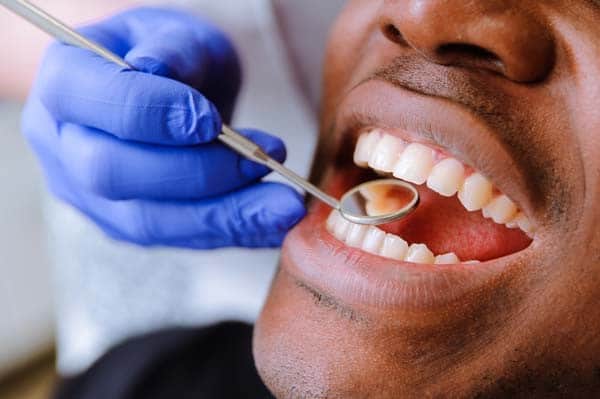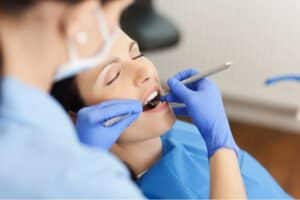A sinus lift, also known as sinus augmentation, is a surgical procedure performed in dentistry to increase the amount of bone in the upper jaw, specifically in the area of the upper molars and premolars. This procedure is typically necessary when there is insufficient bone height in the upper jaw to support the placement of dental implants.
The sinus is a hollow, air-filled space located behind the cheekbones on both sides of the nose. The floor of the maxillary sinus is often very close to the upper jawbone, especially in the molar region. When teeth are lost in the upper jaw, the surrounding bone will shrink over time. As a result, the remaining bone may not be adequate to support the stable placement of dental implants due to it being so close to the sinus membrane.
A sinus lift involves lifting the thin membrane that divides the sinus from the jawbone and placing a bone graft in the space created. This bone graft stimulates new bone growth, increasing the height and thickness of the jawbone. Once the bone graft has integrated with the existing bone, dental implants can be securely anchored in the augmented area. This bone graft process can involve up to 6 months for proper integration.
The need for a sinus lift can arise for various reasons. The most common reason for a sinus lift is the loss of one or more upper back teeth, particularly the molars. The prolonged absence of molar can lead to bone resorption. After tooth extraction, the bone in the extraction site may undergo resorption, leading to reduced bone height. Also some individuals naturally have larger sinuses, leaving less bone in the upper jaw to support implants. Finally, some patients may have a hereditary or congenital bone defect that may lead to the need of a sinus lift in order to receive dental implants.
The sinus lift procedure is typically performed by an oral and maxillofacial surgeon or a periodontist. It involves several key steps:
- Diagnostic imaging: Before the surgery, the dentist will use imaging techniques such CT scans to assess the quantity and quality of the existing bone and the location of the sinus.
- Incision: A small incision is made in the gum tissue to expose the underlying bone.
- Access to sinus: A small opening is created in the bone to access the sinus membrane without damaging it.
- Lifting the sinus membrane: The sinus membrane is gently lifted, and a space is created between the membrane and the jawbone.
- Bone graft placement: Bone graft material, often obtained from the patient’s own body or a synthetic source, is placed in the space created. .
- Closure: The incision is sutured, and the healing process begins.
After the sinus lift procedure, a healing period of 4-6 months is necessary for the bone graft to integrate and for new bone to form. Once the area has healed adequately, dental implants can be placed, providing a stable foundation for prosthetic teeth, such as crowns, bridges, or fixed dentures. It is important to keep in mind that the implant placement must not be delayed more than 6 months after the healing period before the bone resorption process starts again. Waiting longer than that may involve the need for a second sinus lift to place an implant in the desired area.
While a sinus lift is a common and well-established procedure, it does involve some risks and potential complications, such as infection, sinus membrane perforation, or graft failure. This is why it is so important to have an adequate and experienced dental professional. Patients undergoing a sinus lift should follow post-operative care instructions carefully to optimize the healing process.
In conclusion, a sinus lift is a valuable surgical procedure that allows patients with insufficient bone in the upper jaw to receive dental implants. The success of the procedure depends on various factors, including the patient’s overall health, the quality of the bone graft, and adherence to post-operative care guidelines. At the Costa Rica Dental Team, we count with experienced and talented oral surgeons that can perform this procedure should it be required. We are a dental office in Costa Rica with more than ten years’ experience returning smiles. We know the sinus lift can be an expensive procedure at home, so we are here to make it more affordable without compromising in quality. Curious to see how it works? Contact us now!




